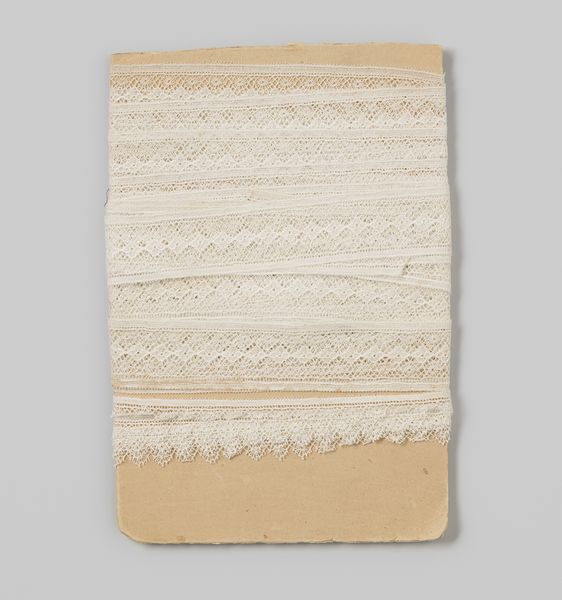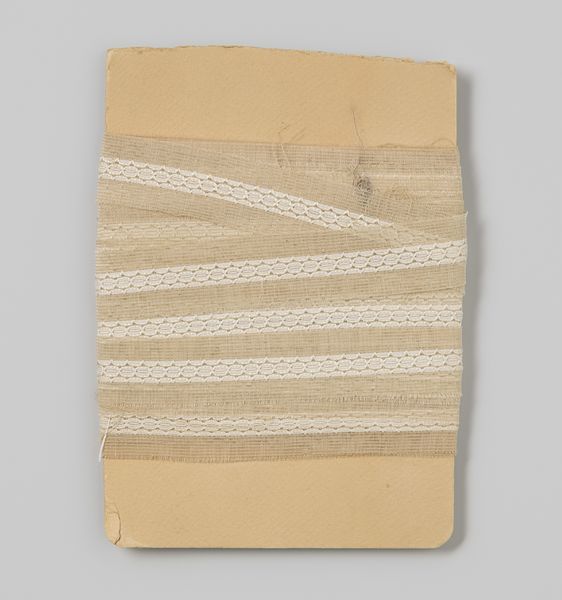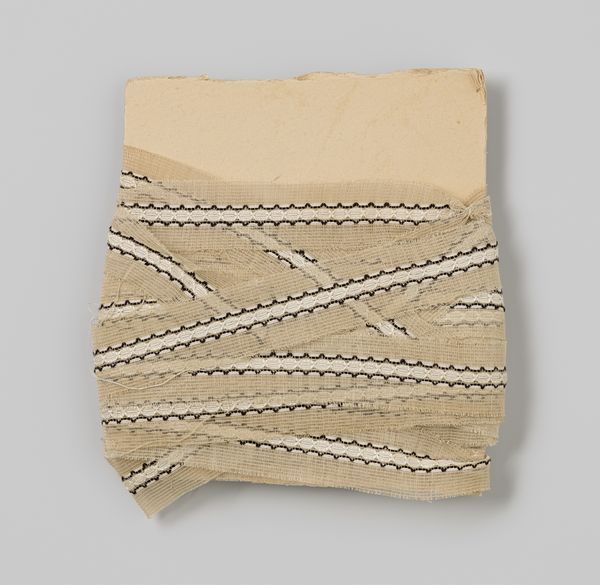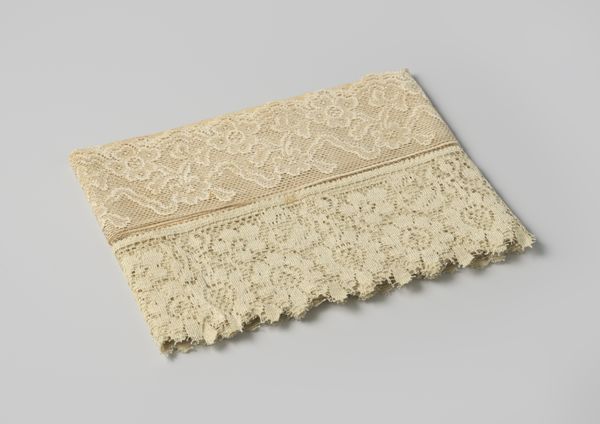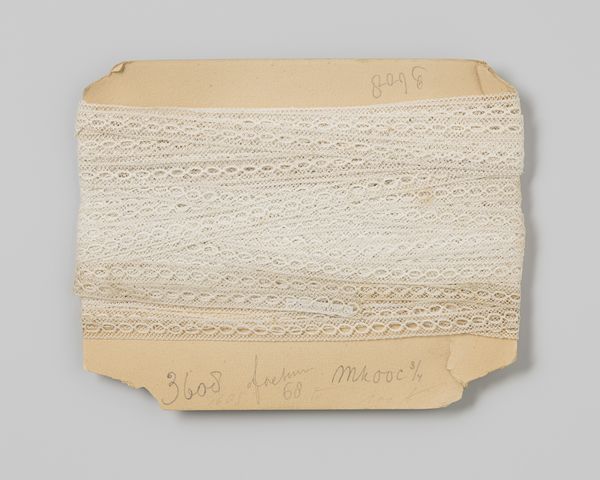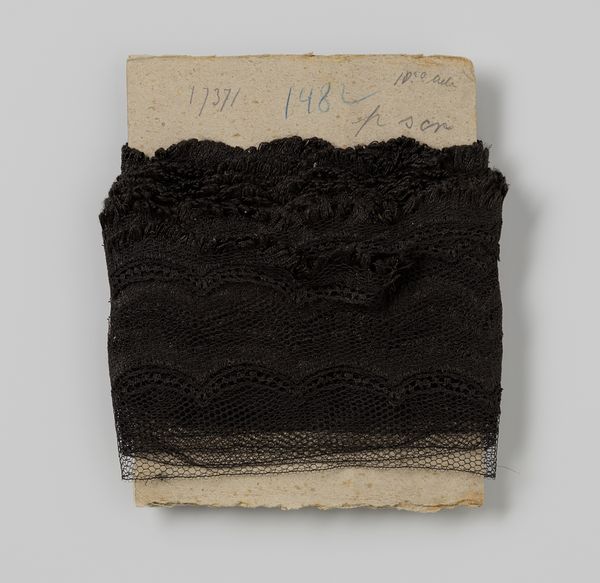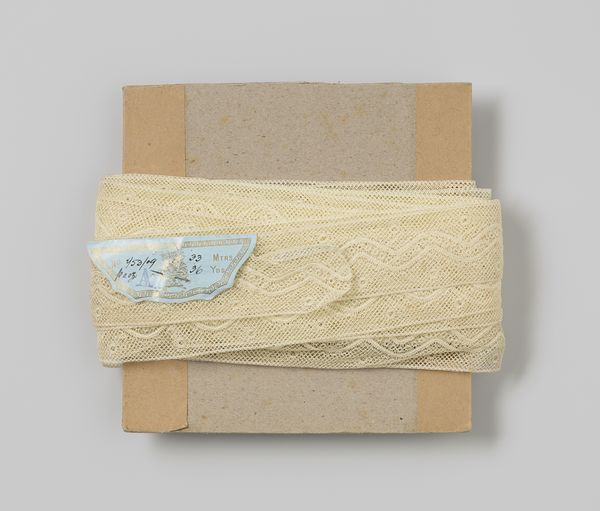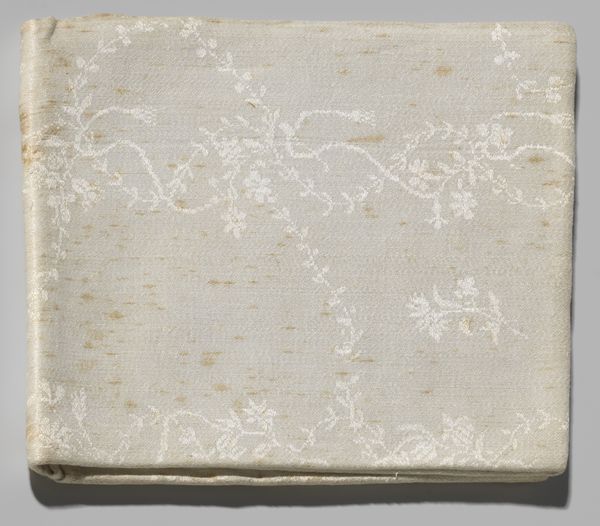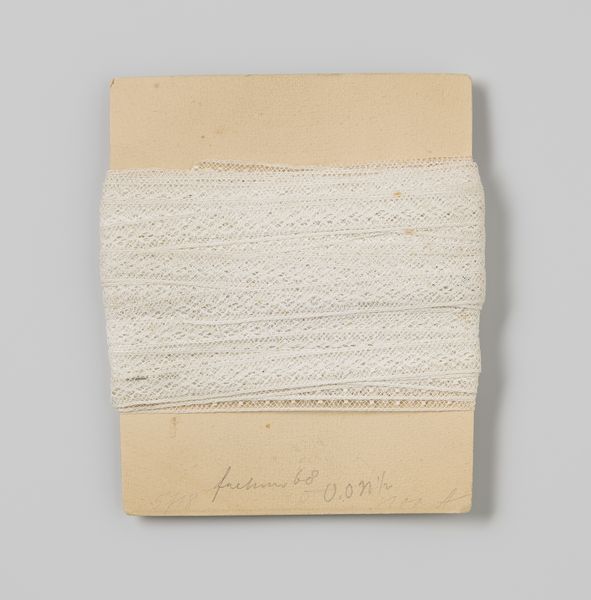
Dimensions: width 3.6 cm, length 16.7 cm, width 15.5 cm
Copyright: Rijks Museum: Open Domain
Editor: Here we have "Tussenzetsel van wit kant met floraal motief op karton," a piece of white lace with a floral motif on cardboard, from around 1920, housed at the Rijksmuseum. The lace itself looks incredibly delicate, but its presentation is almost industrial, wound tightly on a piece of what looks like aged cardboard. What strikes you most about this piece? Curator: I’m drawn to the intersection of high craft and its means of distribution. We have a very delicate material, created by hand, presented in a way that emphasizes its availability as a commodity. This tension between the labor involved in the lace-making and its presentation for sale is central. Who was making lace at this time, and what were their working conditions? Were these anonymous workers or individual artisans who could claim the designs as their own? Editor: That’s fascinating. I hadn’t really considered the labor aspect of it. It seems so far removed now. Curator: The survival of the cardboard is equally fascinating to me; it helps us remember its commercial context. It is also worth asking, why was cardboard chosen as the substrate for these items, which implies a certain temporality to them; it isn't archival, it is an indicator of quick turnaround and profit incentives of the 1920's. Editor: So you’re suggesting that the contrast between the fragile lace and the almost disposable cardboard is intentional? That it highlights the way handmade goods were being absorbed into a more industrial economy? Curator: Precisely! It shows us the material culture of the era— the intersection of handcrafted beauty with the burgeoning world of mass production and consumption. The delicate craftsmanship and how it was situated in this economy, now accessible at the Rijksmuseum. Editor: I’m starting to see it differently now. It’s not just a pretty piece of lace; it’s a document of labor and commerce. Curator: Exactly, considering materials in their economic and social context reveals a deeper understanding of objects such as this one.
Comments
No comments
Be the first to comment and join the conversation on the ultimate creative platform.

